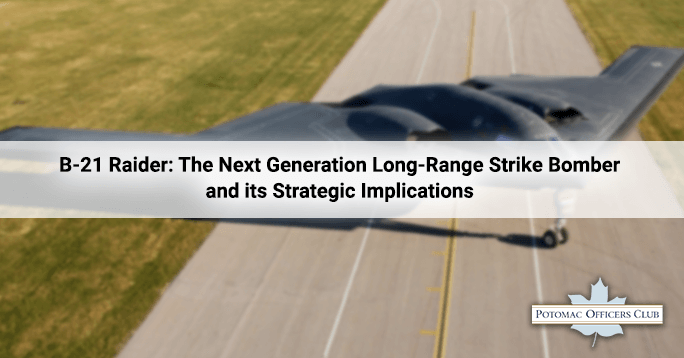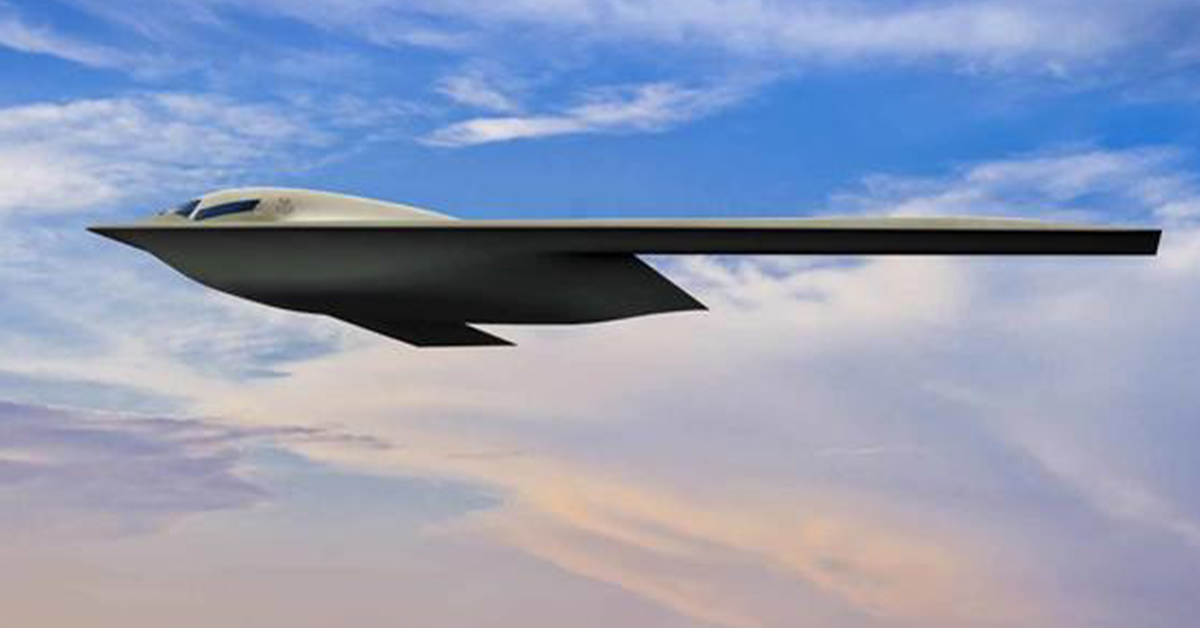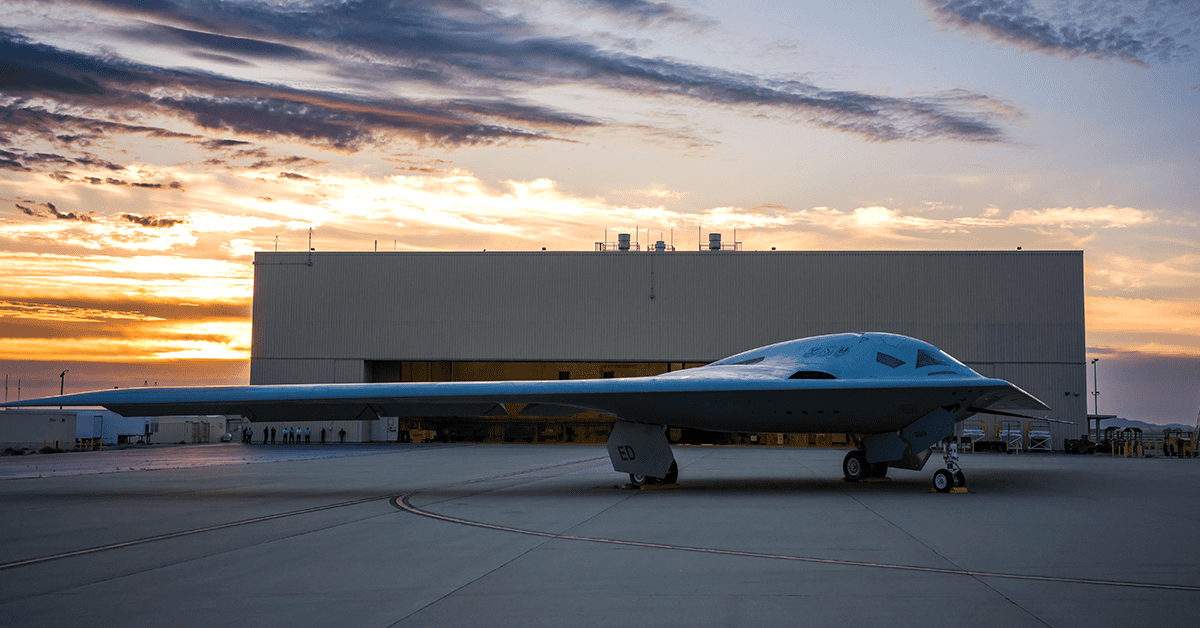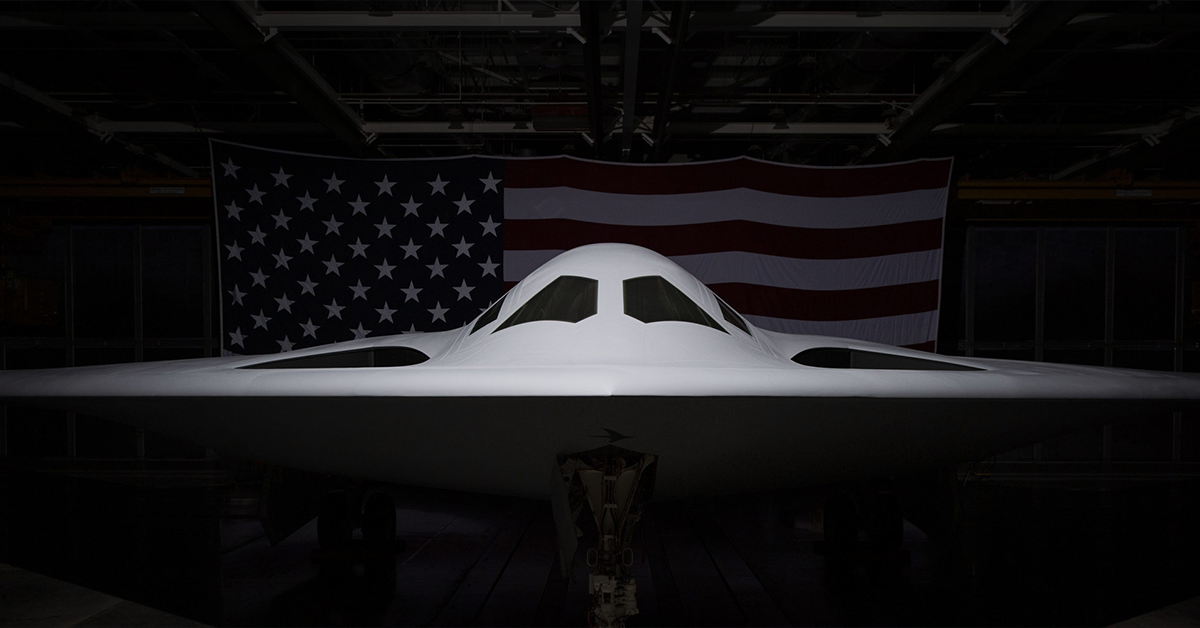
B-21 Raider: The Next Generation Long-Range Strike Bomber and its Strategic Implications
The B-21 Raider is the new stealth long-range bomber that’s been under wraps for almost ten years. It was first revealed in December 2022 to an exclusive crowd of 3,000 people, including Defense Secretary Lloyd Austin, top military leaders, and industry experts.
The next-generation long-range strike bomber could be the airborne solution to America’s deterrent force as the nation figures out how to deal with the growing threats from powerful nuclear countries like China and Russia and future adversaries.
Learn more about this new long-range strike bomber, from its origins to its key features and strategic implications.
Significance of B-21 Raider in the Military
The U.S. Air Force is progressing significantly with their new stealth bomber, the B-21 Raider. They recently ran the engines and performed the first “power on” test, bringing them closer to the highly anticipated first flight, expected before the end of 2023.
Before the Raider can take off, it must go through a series of tests on the ground to ensure everything is working perfectly. This is an important step to evaluate its functionalities, components and systems, so they can optimize its design, reduce risks, and enhance its operational effectiveness.
The U.S. Air Force has big plans for this top-secret bomber. In ten years, it will replace the B-1 Lancer and B-2 Spirit as a vital weapon in deterring aggression from countries like China.
The Raider has an impressive range and advanced stealth capabilities, allowing it to enter enemy territory unnoticed and carry out crucial strike missions. The Air Force sees it as the cornerstone of their future bomber fleet, a powerful asset in their arsenal.
The Predecessor of B-21 Raider and Its Advancements

The Features of the B-21 Raider Long-Range Strike Bomber
Northrop Grumman’s B-21 Raider has some impressive features. It shares similarities with its predecessor, the B-2, regarding its stealth technology. The B-21’s blended-wing design can effectively avoid detection by low-frequency surveillance radar. However, this design does sacrifice some maneuverability due to its minimized protrusions and lack of defined contours.
Stealth Capabilities of the B-21 Raider
One of the key advantages of the B-21 Raider is its stealth capabilities, which allow it to carry out long-range strikes in any threat environment.
Improvements and Design of the B-21 Raider Compared to the B-2
Compared to the B-2, the B-21 Raider has greatly improved. It is smaller, cheaper, and easier to maintain. It incorporates new advancements in low-observable technology, making detecting it even more difficult. The U.S. Air Force’s Rapid Capabilities Office has taken a conservative approach to the B-21’s design, resembling the original B-2 bomber but with some modifications. The wingspan of the B-21 is around 132 ft.
The Cost and Maintenance Efficiency of the B-21 Raider
The U.S. Air Force plans to acquire a minimum of 100 B-21 Raiders, and each aircraft carries a price tag of $700 million. However, the B-21’s maintenance requirements are less demanding than previous stealth aircraft. It features more durable low-observable treatments and coatings, reducing the need for specialized resources. The maintenance facilities for the B-21 are also less expensive to construct and maintain.
Digital Design and Maintenance Capabilities of the B-21 Raider
Furthermore, the B-21 Raider benefits from the early utilization of digital design and modeling capabilities. This resulted in a more robust aircraft ready for daily flights. It has virtual maintenance capabilities such as Northrop Grumman’s Highly Immersive Virtual Environment (HIVE).
This feature allows engineers and maintainers to navigate through a digital representation of the B-21. At the same time, it ensures that the designs are producible during the manufacturing process and easily identifies potential maintenance issues.
Key Features

B-21 Raider Employs Open Architecture System
The B-21 Raider is designed to adapt and stay ahead of emerging threats with its open architecture. Unlike older aircraft, it won’t require block upgrades. Instead, it can easily incorporate new technology, capabilities, and weapons through flexible software updates and hardware modifications. This means the B-21 can effectively counter evolving threats for many years.
Secretary Lloyd Austin highlighted that the B-21’s open-system architecture makes it adaptable. It can defend our country with weapons that have yet to be invented.
Additionally, the bomber is versatile and can perform intelligence gathering, battle management, and collaboration with our allies. It seamlessly operates across different domains, theaters, and the joint force.
B-21’s Penetration Capabilities
The B-21 Raider excels in penetrating the most formidable defenses worldwide. While it may be slightly smaller than previous aircraft, its weapons technology has advanced significantly since the late 1980s. What truly matters is the B-21’s ability to stealthily infiltrate Chinese and Russian anti-access and area denial networks, which means it remains undetected while launching highly advanced weapons available today.
The B-21 boasts precision strike capabilities to engage heavily fortified targets over long distances effectively. When neutralizing hardened structures like aircraft shelters, command and control centers, or weapons storage facilities, the use of large, fortified warheads specifically designed for penetrating layers of concrete and steel becomes crucial.
For the most hardened and deeply buried targets, the B-21 is equipped with extremely potent penetrating weapons, such as the 5,000-pound JDAM bombs or the 30,000-pound GBU-57A/B Massive Ordnance Penetrators (MOP).
Range and Payload
Bombers deliver precise and effective strikes at a reasonable cost. The B-21s can penetrate enemy airspace and stay there, armed with a large arsenal. These can hit and destroy multiple targets in a single mission and unleash a barrage of weapons or decoys to overwhelm and disable the enemy’s air defense systems. Thus, creating opportunities for other assets to join the fight.
These penetrating bombers offer a cost-effective way to deliver substantial payloads of weapons. These are capable of direct attacks, standoff strikes, or a combination of both, in areas with significant opposition over an extended period. The faster we eliminate high-value targets, the better the chances of success and the resilience of all joint force operations.
Stealth Capabilities of B-21 Raider
The stealth capabilities of the B-21 raider lie in its flying saucer shape. So far, no documents have explained the exact connection between the flying saucer phenomenon—the original popular term for unidentified aerial phenomena—and early stealth developments. However, one part of the explanation may be that the mysterious craft was often believed to evade radar detection.
As pilots begin ground tests of the B-21 Raider, Northrop Grumman (NG) is refining the craft’s shape and inlets to increase the bomber’s ability to remain undetected. The “low observable” (LO) technology of the B-21 uses a flying wing shape that looks like a flying saucer from the front.
There is no vertical tail, a sharp edge around the entire nose and jagged edges on the landing gear doors – all LO features.
Strategic Implications of the B-21 Long-Range Strike Bomber

Enhances Global Reach and Deterrence Capabilities
The B-21 Raider is an aircraft with global reach. It can fly up to approximately 6,000 miles without needing to refuel. It can cover vast distances and engage multiple targets during a single mission. Its operational range, combined with its stealth features, makes it a powerful platform for missions worldwide.
Not only that, but the B-21 Raider will also contribute to the nation’s deterrence capabilities. It will be part of the nuclear triad, a visible and flexible deterrent. Supporting national security objectives assures the nation’s commitment to the safety of our allies and partners.
Impacting Power Dominance
The B-21 Raider is going to be a game-changer when it comes to military power. It will be the most survivable, lethal, cost-effective combat aircraft ever built. This strategic bomber is set to be the world’s most advanced stealthy bomber, and it’s expected to be deployed in the next few years.
The B-21 Raider is specifically designed to operate in the future’s high-threat environment. It will maintain the United States’ airpower capability for years to come. It’s not just a standalone aircraft, either. It’s part of a larger system with other capabilities like intelligence, surveillance, reconnaissance, electronic attack, and communication.
Finally, the B-21 Raider is a dual-capable penetrating strike stealth bomber. That means it can deliver both conventional and nuclear munitions, making it a highly adaptable and powerful asset for the military.
FAQs
Why is the B-21 Cheaper Than the B-2?
The B-2 is the priciest military aircraft, costing $2 billion per unit, while the B-21 Raider is estimated at $700 million per unit. B-21 Raider is cheaper than the B-2 Spirit because the B-21 will utilize advanced radar-absorbent materials, resulting in a smaller radar signature and lower upkeep costs compared to the B-2’s 1980s technology.
With improved sensors and digital systems, the B-21 will undertake missions beyond the B-2’s capabilities, such as surveillance and data relay. The per unit cost is influenced by production quantity. While the B-2’s reduced quantity increased costs, the B-21’s planned production of around 100 units is subject to potential cost changes depending on the U.S. Air Force’s plan.
How Many Missiles Can a B-21 Carry?
The B-21 Raider can carry 16 AGM-158A JASSM or extended-range AGM-158B JASSM-ER missiles.
Can the B-21 Fly without a Crew?
The B-21 can fly crewless using artificial intelligence. Although possible, the U.S. Air Force does not plan to fly it without a crew yet.
Related Articles
- HIMARS: A Comprehensive Guide to High Mobility Artillery Rocket System
- Iron Dome: The Importance and Relevance of Israel’s Airspace Defender
- 10 Anti-Drone Weapons Used by the U.S. Military

Category: Articles




